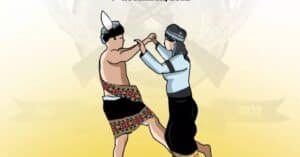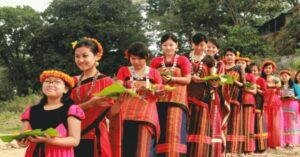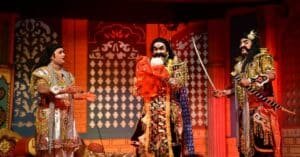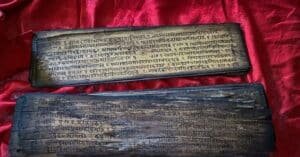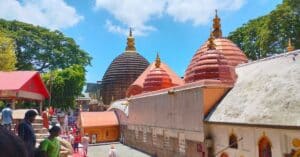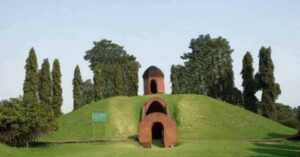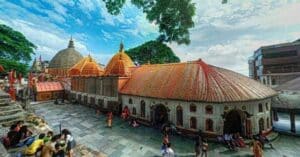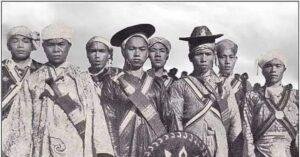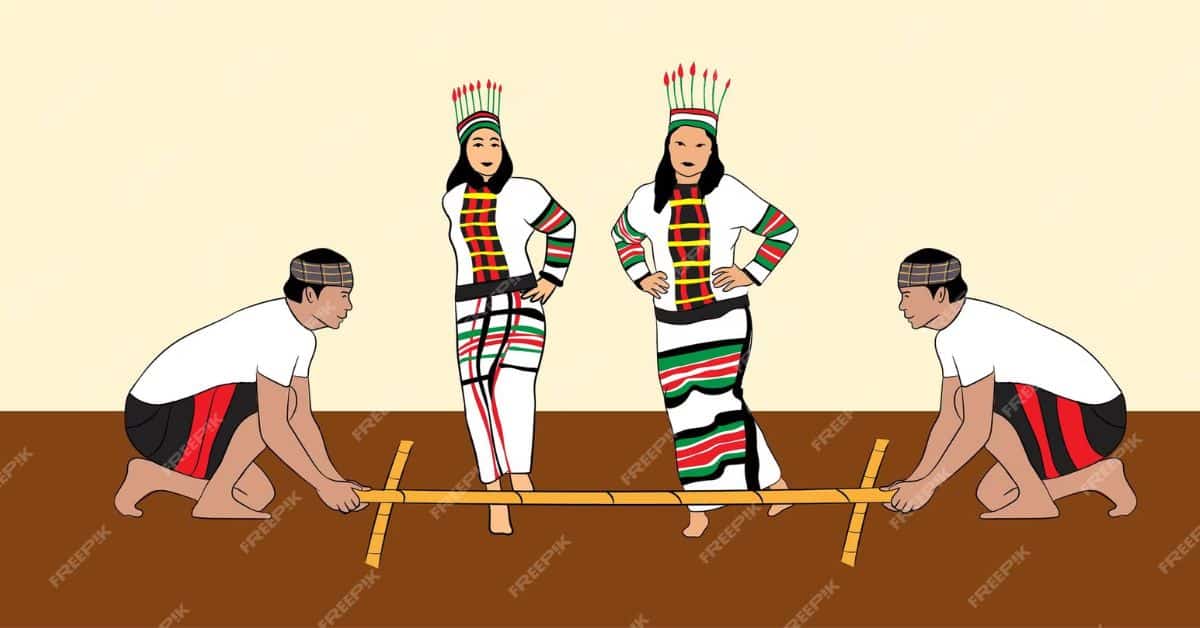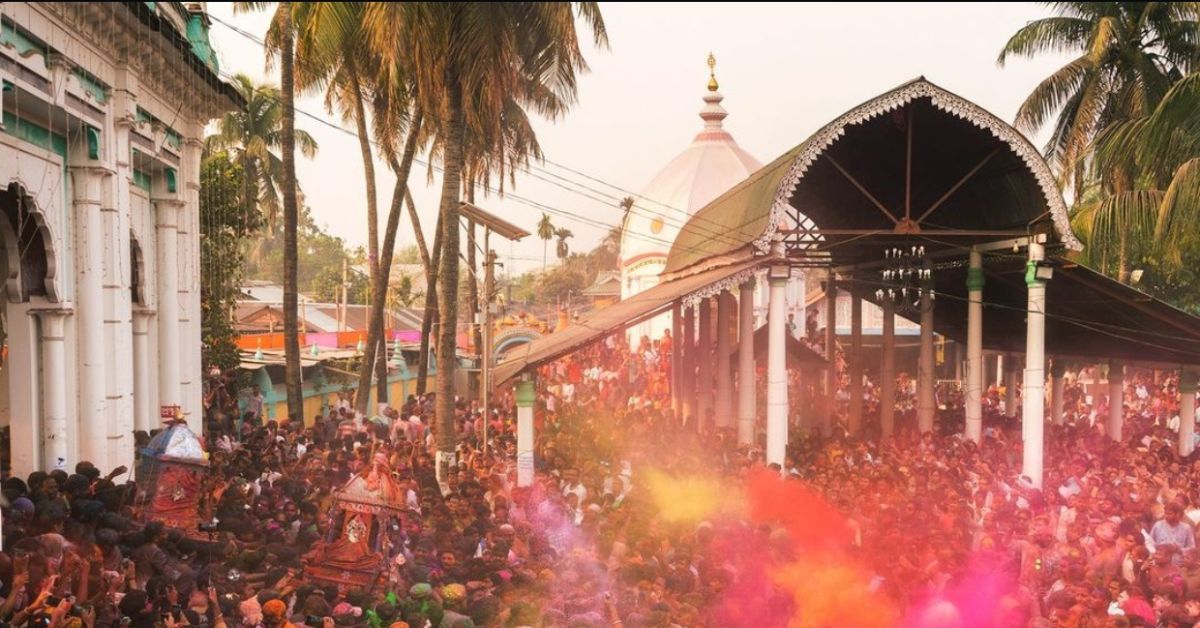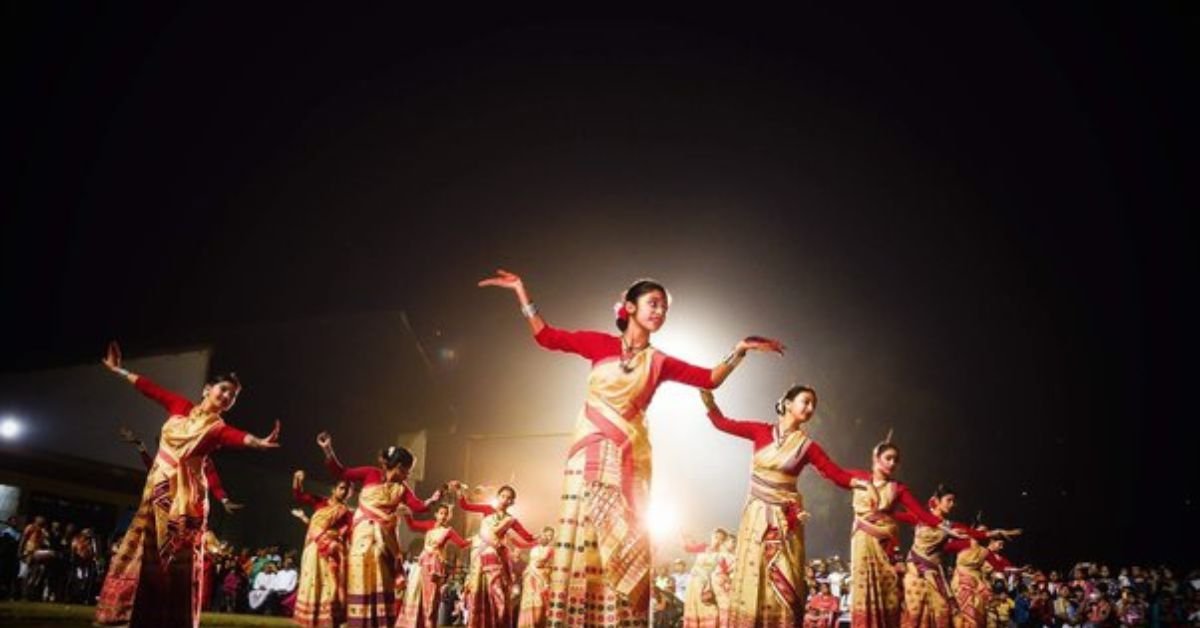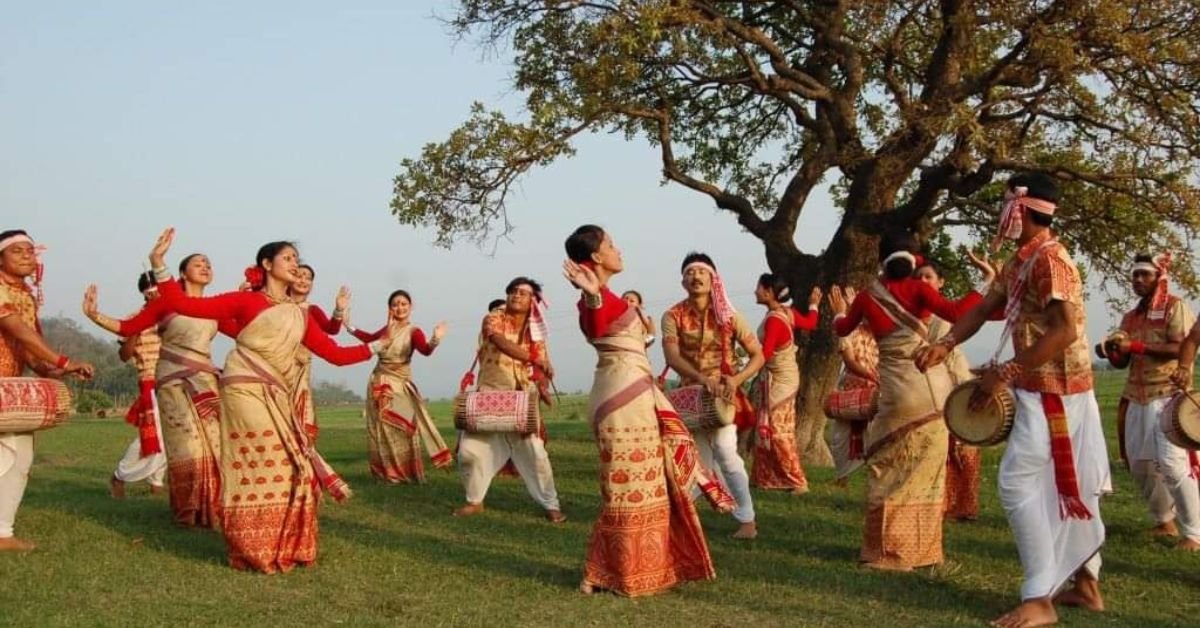The North Eastern states of India are indeed home to a significant population of tribal communities. While these tribal communities have diverse cultures, languages, and traditions, most of the tribes belong to the Indo-Mongolian or Tibeto-Burman linguistic and ethnic groups. The state of Tripura is no exception. The tribes of Tripura share ethnic and linguistic similarities with other tribes of North East India. At present, there are 19 major and minor tribes in Tripura. The tribes of Tripura, which constitute more than 50% of the total population of Tripura, can broadly be classified into two major branches: Local Tribes of Tripura and Tribes migrating from another region of North East India. Some of the tribes of Tripura have been living in the region since time immemorial. These are classified as the local tribes of Tripura.
Local Tribes of Tripura
There are 12 local tribes in Tripura. These tribes have been living in the state and contributed heavily towards the growth of the larger tribal identity of Tripura. There are namely Tripuri, Reang, Jamatia, Noatia, Mog, Chakma, Halam, Kuki, Garo, Aimol, Lushai and Uchai. However, there is no clear demarcation among the local tribes of Tripura because of their common ethnicity and language group. For instance, the Noatia and Uchoi tribes are sometimes considered as clans of the larger Tripuri tribe.
Tripuri Tribe: One of the Major Tribes of Tripura
The Tripuris, the largest tribal community in the state of Tripura, can be regarded as the original inhabitants of the region, having migrated there first. According to the 2011 Census, their population in the state stands at 5,92,255 individuals, making them the most numerous among all the tribal groups in Tripura. Until 1949, Tripura was under the rule of Tripuri kings.
In terms of ethnicity, the Tripuris trace their origins to the Vot Brahmi branch of Indo-Mongoloid group, and linguistically, they belong to the Tibeto-Burmese family. They communicate in the Kok-Borok dialect, similar to the other seven tribal groups in Tripura. The word ‘boro’ in the Bodo/Boro language(another language in Tibeto-Burmese) means human and the word ‘barak’ in the Tripuri language also means human. The Tripuri tribes call their language ‘Kok-Borok’ (Kok-Language, Borok-Men).
The Tripuri tribal group is the largest in the state of Tripura. According to historians, this is one of the reasons for naming this state as Tripura. All three districts of Tripura are inhabited by Tripuri tribes. However, they are concentrated in the Sadar subdivision.
Religiously, the majority of Tripuris practice Hinduism, with adherence to both the Shakti Cult and Vaishnavism. Additionally, they hold beliefs in various deities and have a rich tradition of performing different rites and rituals that have been passed down through generations. Their main festivals include Garia, Kharchi, and Ker. They are also known for their vibrant folk dances, such as Garia, Lebang, Musak Surmani, Tangbiti, and Mamita. These dances are accompanied by melodious folk songs and the music of traditional instruments like the flute, sarinda, champreng, and other string instruments.
Over time, due to significant social transformations in various aspects of their lives, including agriculture, socio-cultural practices, the economy, education, and health awareness, the Tripuris are now considered an advanced tribal community among the tribes of Tripura.
Reang Tribe: One of the Major Tribes of Tripura
The Reang community, the second-largest tribal group in Tripura, holds official recognition as one of India’s 75 primitive tribes. According to the 2011 Census, the population in the state numbers 1,88,220 individuals. The history of the Reang tribe of Tripura involves migration, with some originating from the Shan State in upper Burma (now Myanmar), arriving in waves in the Chittagong Hill Tracts before settling in the southern part of Tripura. Another group entered Tripura during the 18th century via Assam and Mizoram.
In terms of ethnicity, the Reangs are part of the Indo-Mongoloid racial stock. Their language, known as “Kaubru,” exhibits linguistic affinities with the Austro-Asiatic groups within the Tibeto-Burman language family. The Reang community is divided into two major clans, namely, Meska and Molsoi/Morchhoi. While their language incorporates tonal elements from the Kuki language, it can be broadly categorized as a Kok-Borok dialect.
Traditionally, the Reangs have embraced a nomadic way of life, with a substantial portion of their population practising hilltop Jhum cultivation and engaging in food gathering activities such as foraging for jungle fruits and leaves, fishing in stagnant waters on hill slopes, and hunting wild animals and birds. Their belief system encompasses various deities, including Buraha, Bonirao, Songragma, Jampira, Lampra, and several female deities like Mwtaikotorma, Tuibuma, Mailoma, and Ganga. They also hold beliefs in spirits and the existence of the soul. Although they follow the Hindu faith, with many of their deities bearing resemblances to Hindu gods and goddesses, a significant number of Reangs adhere to Vaishnavism.
Traditionally, the Reangs practice endogamy and do not marry individuals from outside their community. The village council chief, known as “Rai,” possesses the authority to permit divorce and widow marriage. For their deceased members, they conduct cremations alongside a river or chara, following a series of rituals and funeral processions.
Reangs have a culturally rich heritage characterized by unique components. The Hozagiri dance, accompanied by the enchanting melodies of the flute, stands out as a particularly attractive cultural expression, gaining recognition both within India and beyond.
Owing to societal transformations and modernization, notable changes are observable among the Reangs in various facets of their lives, including shifts in agriculture and economic pursuits, alterations in social and cultural practices, increased emphasis on education, and improvements in health and sanitation. Consequently, the Reangs have evolved into a community that is aware and progressive in the context of the tribes of Tripura.
Jamatia Tribe
The Jamatia community, hailing from a Mongoloid origin, possesses distinct characteristics. They share a language similar to that of the Tripuris i.e. Kok-borok. The Jamatiya tribes are the kin of the Tripuri tribes. According to the 2011 Census, the population in Tripura stands at 83,347. This Jamatiya community was the first group to abandon jhoom cultivation and start farming with ploughing.
In the past, the Jamatias played a crucial role as a significant part of the Royal Army of the Tripura kingdom, a position that granted them exemptions from house taxes during the era of the kings. Originally, the Jamatias practised Jhum cultivation, but over time, they transitioned to plough cultivation. Presently, many of them rely on cultivating plains and engage in various other economic activities.
Regarding their faith, the Jamatias predominantly follow Hinduism and have embraced both the Sakti-cult and Vaishnavism. They have a central traditional social institution known as “Hoda Akra,” which holds the authority to preserve, promote, and oversee their social norms, customs, and religious practices. Additionally, it resolves social and legal disputes among community members. No post in the Jamatia administration i.e. Hoda Akra is hereditary. A person is appointed to all these positions based on election and remains in that position as long as the public trusts him.
The Jamatias hold a deep affinity for their traditional folk culture, including drama, the Garia festival, and other common dances practised by Kok-Borok-speaking tribes. They have developed a unique version of the Garia Dance that reflects their Hindu-influenced religious culture. A significant portion of the Jamatia population follows Vaishnavism and observes traditional events by their customs and traditions.
Noatia Tribe
The Noatias are a prominent tribe of Tripura. While they are considered part of the Tripuris, they are often categorized as “newcomers.” In reality, the Noatias have a history rooted in the Arakan Hill Tracts, where they resided for an extended period before migrating to the southern part of Tripura via the Chittagong Hill Tracts. Physically, Nowatia tribal people have short stature and fair complexion. They are found in large numbers in Tripura, Udaipur, Sarum, Kamalpur, Khoai, Dharmanagar and Bilonia sub-divisions. According to the 2011 Census, their population is reported to be 14,298.
From an ethnic standpoint, the Noatias share a common Mongoloid origin with other tribes, and their language is Kok-Borok. Interestingly, the name “Noatias” may not have been their original tribal name; they were originally identified as Tripuris. According to legend, a significant war unfolded between the Tripura king and the Arakan king, leading to the capture of numerous Tripuri soldiers by the Arakan forces. These Tripuri soldiers had to stay in Arakan, where they interacted with the local tribal communities, resulting in changes to their language and culture. Even today, remnants of their original culture can be seen in their physical features, skin tones, dietary practices, language, and customs.
The Noatias are organized into 11 major clans, including Anokia, Khaklu, Totaram, Murasing, Noatia, Deildak, Keowa, Garjan, Tongbai Kalicha, and Aslong. They predominantly follow Hinduism and adhere to the traditional customs and rituals associated with the religion. Vaishnavism plays a significant role in the Noatias’ religious practices. Additionally, like other Kok-Borok-speaking tribes, they partake in cultural celebrations such as Garia and Baisu festivals, preserving their cultural heritage.
Mog Tribe
Based on the 2011 Census data, Tripura is home to a population of 37,893 Mogs, with significant concentrations in Sabroom and Belonia town. The Mogs, originally from the Arakan tribe, migrated to Tripura through the Chittagong Hill Tracts. Their religious affiliation is Buddhism, and their language falls under the Tibeto-Chinese language family, closely related to the Assam-Burmese section of languages.
Mogs primarily rely on Jhum Cultivation for their livelihoods and have established an administrative social council, with its leader known as the Chowdhury. Their cultural practices include cremation ceremonies, and they observe the Wah Festival, an annual gathering featuring a blend of folk songs and dances. Interestingly, Mog culture shares strong similarities with Burmese culture, with their folk tales and songs known for their captivating narratives and emotional resonance.
The Mog community also possesses a tradition of expertise in folk medicine. In addition to their regular economic activities, some members of the community earn a living by practising traditional treatments that utilize indigenous medicines. In Tripura, Mogs predominantly practice Buddhism. However, it’s important to note that they still maintain some of their traditional pujas (rituals) and festivals alongside their Buddhist observances.
In contemporary times, most of the festivals celebrated by Mogs in Tripura are connected to Buddhism, including Buddha Purnima, Owa-Cho-labre, Owagya labre, Kathin Chibar dan, and Sangreing Festival, among others.
Chakma Tribe
The Chakmas are one of the significant tribal communities in Tripura, known for their origins in Southeast Asia. Their historical migration path took them from their initial settlement in the Arakan Hill region of Myanmar to the Chittagong Hill tracts in Tripura. Over time, a substantial portion of the Chakma population migrated further to Mizoram and Arunachal Pradesh from their original homeland. As per the 2011 Census, Tripura is home to 79,813 Chakmas, with their main concentrations found in areas such as Belonia, Subroom, and Amarpur in South Tripura, as well as Dhalai and North Tripura Districts, including places like Chamanu, Gandacherra, Kanchanpur, Machmara, among others.
Among the Chakma community, there are three major subgroups: Anokia, Tandugia, and Mangla. Linguistically, the Chakma language is a fusion of Indo-Aryan words, Tibeto-Chinese influences, and, primarily, the Arakanese language. Describing their language, one could say it’s a blend of fragmented Bengali and Assamese. While the Chakmas have their script using Burmese alphabets, it is not widely used, with the Bengali script being more commonly employed due to its ease of learning.
Interestingly, a significant number of the Chakma tribe have been living in Arunachal Pradesh. Click here to read about the Chakma tribe of Arunachal Pradesh.
Halam Tribe
The Halam communities in Tripura are ethnically linked to the Kuki-Chin tribes of the Tibeto-Burmese ethnic group, and their language bears resemblance to the Tibeto-Burman family of languages. In general, Halam tribal people are bilingual and speak both the Halam language and the Tripuri Language. While they are sometimes referred to as Mila Kuki, it’s essential to recognize that they significantly differ from the Kukis in terms of language, culture, and way of life. Within the Halam community, they are further divided into several sub-clans collectively known as “Barki-Halam.” The major sub-clans among the Halams encompass Koloi, Korbong, Kaipeng, Bong, Sakachep, Thangachep, Dab or Nabin, Bongcher, Molsom, Rupini, Rangkhowl, Chorai, Lankai, Kaireng (Darlong), Ranglong, Marchafang, and Saihmar. As of the 2011 Census, the total Halam population in Tripura numbers 57,210, and they are spread across the state.
In terms of housing, Halam communities typically inhabit traditional “Tong Ghar” structures crafted from bamboo and Changrass thatch. They continue to engage in both conventional plain land cultivation and Jhum cultivation, supporting their livelihoods with these activities as well as pursuing other supplementary occupations. Notably, a considerable number of Halams hold positions in government employment.
Certain Halam sub-clans, such as Koloi, Rupini, Molsom, Ranglong, and Lankai, boast distinctive and vibrant dance traditions, including those tied to Jhum cultivation. Among these, the “Hi-Hook dance” stands out as particularly renowned and widely appreciated. The Rai Balmani Festival is currently celebrated with great enthusiasm by the Koloi clan of the Halams, fostering a strong sense of joy and active community participation.
Though the Halam community follows Hindu rituals, a part of the community has been converted to Christianity.
Kuki Tribe of Tripura
The Kukis are known by different names within various communities, including Lushai, Kukis, Darlongs, Rokhums, and Chins along the Burma border. They identify themselves as Hare-ems, but ‘Kuki’ is the widely accepted generic name for this community.
According to the 2011 Census, the Kuki population in Tripura amounts to 10,965 individuals. Historically, they inhabited hilltop regions and sustained their livelihoods through Jhum cultivation and fruit production. However, they have now transitioned to plain land cultivation and livestock rearing. Linguistically, their language is closely related to the Kuki-Chin linguistic family within the Sino-Tibetan racial group. The Kuki community comprises numerous clans and sub-clans.
Music and dance hold a special place in Kuki culture. While they work diligently in Jhum fields and gardens, they also take pleasure in communal dances and music. Traditionally, they preferred to arrange marriages within their community. In the past, they practised animism and worshipped various deities and spirits. However, over the last 90 years, the majority of them have adopted Christianity as their religion. They have established their own customary laws and village councils, with the title “LAL” signifying the village chief. The village chief typically presides over various social, religious, and marital disputes, including those related to marriage and divorce. Presently, the Kukis have made notable socioeconomic progress compared to other tribal communities.
Garo Tribe
The Garos are a tribal community in Tripura, originally hailing from regions like Meghalaya (Garo Hills), as well as areas in Assam such as Kamrup and Goalpara, and parts of Mymensingh in Bangladesh. Their migration to Tripura began during the first half of the 19th century, with a notable influx occurring after 1950. According to the 2011 Census, the population in Tripura is recorded at 12,952, with significant concentrations in the Udaipur Sub-Division and Sadar Sub-Division of the state. Ethnically, the Garos belong to the Tibeto-Burman linguistic family within the Mongoloid racial group, and they share cultural similarities with tribes like the Bodo-Cacharies, Ravas, Karbi, and other North-East tribes.
The Wangala festival holds immense cultural significance for the Garos, marking the celebration of a new crop harvest. During this festival, the entire community comes together to participate in colourful dances, songs, and music. The traditional musical instruments used by the Garos, including the long-hand drum, are particularly noteworthy for their melodious tunes, which evoke deep and lasting emotions.
Within their social structure, the Garos have established a traditional social council, and the village chief plays a vital role in overseeing social customs and resolving various social disputes among community members.
Aimol Tribe of Tripura
The Aimol community is an ethnic group primarily residing in Manipur. However, a significant number of the Aimol tribe live in Tripura. They communicate using the Aimol language, which belongs to the Kuki-Chin language family. The Aimol people consider themselves an independent tribe without any affiliations. However, an oral history of both the Kuki and Aimol tribes reveals that they are another branch of the Kuki tribe.
Lushai Tribe
The Lushai tribe belongs to the Kuki-Chin group of tribes and is primarily concentrated in the Kanchanpur Sub-Division of North Tripura District. Lushais are commonly known as Mizos and are of Mongoloid origin. In Tripura, their population was recorded as 5,384 individuals according to the 2011 Census. Their culture closely resembles that of the Mizos, and Lushais are predominantly found in the Jampui Hills area of Tripura.
Lushai livelihoods primarily depend on Jhum Cultivation and hunting of wild animals. They have a diet that includes meat from various types of animals and birds. Additionally, they are well-known for their orange production. Historically, Lushais was known as a Head Hunter community. However, during the first part of the 19th century, a significant number of Lushais converted to Christianity, and Christianity remained their predominant religion.
The Cheraw Dance, also known as the Bamboo Dance, is a highly popular cultural dance among the Lushais, both within and outside the country. Their literacy rate is comparatively higher than that of other minor tribes in Tripura, and a substantial number of them hold government jobs and are involved in various economic fields.
Uchai Tribe
The Uchai tribes have a long-standing presence in Tripura, having migrated from the Arakan Hills of Myanmar in ancient times. According to the 2011 Census, there are 2,447 Uchais in the state, primarily concentrated in the Amarpur and Belonia Subdivisions. Folk tales suggest that Uchais and Reangs share a common origin and belong ethnically to the Mongoloid tribal groups. The language and culture of the Uchais closely resemble those of other Kok-Borok-speaking tribes such as the Reangs, Tripuris, and Jamatias. Uchais traditionally live in Tong (Gaireng) houses constructed from changes thatch and bamboo.
Historically, Uchais practised Jhum cultivation, producing everything they needed in high hillocks and slopes. They relied on various other economic and food-gathering activities in the forest, including hunting wild animals and birds. In recent times, Uchais have transitioned to plough cultivation and settled in plain areas alongside other tribes.
Uchai culture is vibrant. Their traditional attire, ornaments, and musical instruments hold a special charm. They celebrate their ceremonies with great joy, often dancing in colourful dresses to the sweet melodies of flutes and drums, bringing delight to all who witness their cultural expressions.
The abovementioned tribes are considered the major tribes of Tripura as they have a sizable population. They are considered local tribes of Tripura as the traditions and festivities of these tribes have contributed immensely towards the growth of the culture of Tripura. However, other minor tribes of Tripura have migrated from the state from neighbouring regions at different periods. Tribes like Garo, Khasi, and Lushai have migrated from erstwhile Assam province, and tribes like Bhutia and Lepcha have migrated from lesser Himalayan regions. Other minor tribes of Tripura like Bhil, Orao, Saotal and Munda migrated from the central India region during the British era.


